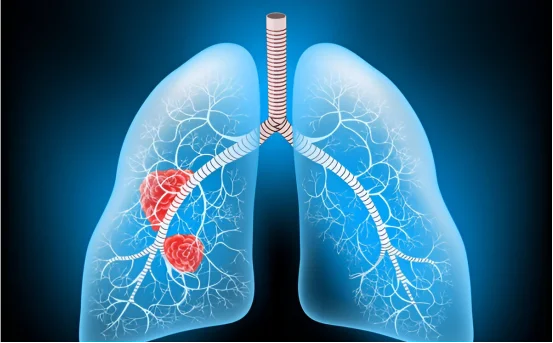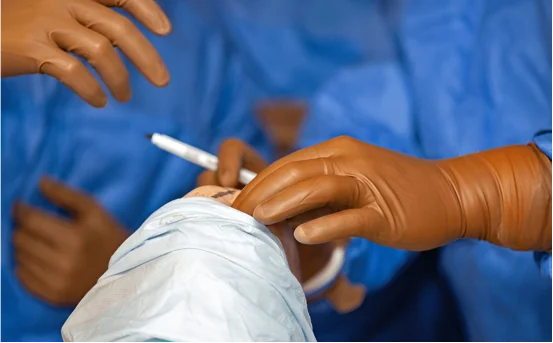The wedge resection is a minimally-invasive, yet highly effective surgery used to diagnose and treat lung conditions. This includes lung nodules and small tumors. This type of surgery is crucial for detecting lung cancer in its early stages and assessing any abnormal lung growths, whether it’s performed to diagnose or treat. The diagnosis for wedge resection surgery may be evaluated alongside treatment options or in an attempt to understand its diagnostic significance.
What is wedge resection surgery?
The wedge resection technique involves the removal of a small wedge-shaped section of lung tissue. This section is usually removed along with the lesion or abnormal tissue. The wedge resection, unlike a lobectomy that removes an entire lung lobe, is less invasive. It also preserves lung function. This makes it ideal for patients who have limited pulmonary reserves.
Video-assisted thoracoscopic (VATS), or robotic-assisted, techniques are used to perform this surgery. These reduce the recovery time, minimize scarring and cause fewer complications than traditional open surgery.
Why Is Diagnosis for Wedge Resection Surgery Performed?
- Diagnose Lung Nodules & Tumors :- The primary reason for wedge resections is to diagnose suspicious pulmonary nodules. Doctors often recommend wedge resections when imaging tests like chest X-rays and CT scans reveal abnormal growths. This allows them to collect tissue samples for biopsy. This can help determine whether the nodule in question is benign, malignant or metastatic.
- Early detection of lung cancer :- Wedge resection is a useful diagnostic and prevention tool for patients who are at high-risk of lung cancer due to their smoking history, exposure to environmental toxins, or family history. By removing small lesions that may be cancerous and examining them, doctors can detect cancer in its earliest stages, improving the prognosis.
- Evaluation of Pulmonary Metastases :- Secondary tumors can develop in the lungs of patients with cancers that originated from other organs. The wedge resection procedure is recommended to determine the type of metastatic nodules, and then determine if further treatment options like chemotherapy or immune therapy are needed.
- Benign Lung Conditions :- The wedge resection can also be used for non-cancerous lung diseases such as:
- Granulomas of tuberculosis
- Inflammatory pseudotumors
- Fungal infections, e.g. histoplasmosis
When non-invasive tests fail to provide a definitive answer, surgery can be used as a way to get relief.
Diagnoses leading to wedge resection
- Imaging & Scans :- Diagnostic journeys typically begin with: Chest X rays, CT or PET scans. These imaging tools can help to visualize abnormalities, such as nodules and masses in the lungs.
- Pulmonary function tests :- Patients undergo pulmonary function testing to assess lung health before surgery. These tests determine if a patient qualifies for wedge resection.
- Nonsurgical Biopsy Options :- Some doctors use the following methods to diagnose lung diseases: Needle biopsy, Bronchoscopy. If the results are not conclusive, or the nodule cannot be accessed, wedge resection is the best option.
- Surgical wedge resection
Once the surgical approach is selected:
- The procedure has been scheduled
- Anesthesia general is administered
- The histopathological analysis of a small piece of lung tissue
The surgical team can perform additional procedures such as a lobectomy or removal of lymph nodes during the same surgery if cancer is confirmed.
The Benefits of Diagnosis by Wedge Resection
The use of VATS or robotics is the most minimally invasive.
- High diagnostic accuracy: Provides complete tissue samples for accurate pathology
- Low risk: Particularly compared to lung surgery that is more extensive
- Shorter hospital stay: Often just 2-3 days post-surgery
- Recovery time is faster
Considerations and Risks
The wedge resection procedure is not without its risks.
- Bleeding
- Infection
- Air leakage in the lung
- Incisional pain
- Resection of the lung can reduce lung capacity, but this is minimal in comparison to large resections.
The risks of thoracic surgeries are reduced when they are performed in centers with experience.
After-Operative Care and Follow Up
After surgery:
- The respiratory function of patients is monitored
- The pathology results are usually available within a couple of days
- Scheduled follow-up imaging and consultations
A multidisciplinary team will determine the best treatment for cancer. This may include radiation, chemotherapy or immunotherapy.
Conclusion
It is important to diagnose lung abnormalities in order to treat potentially dangerous diseases such as cancer. The wedge resection procedure is an effective, accurate and minimally invasive way to diagnose suspicious masses or nodules when other biopsy methods fail.
Consult a thoracic specialist if you have an undiagnosed pulmonary lesion. A wedge resection may be the best way to detect it early and treat it successfully. Discuss all options, risks and possible outcomes with your doctor before proceeding.























